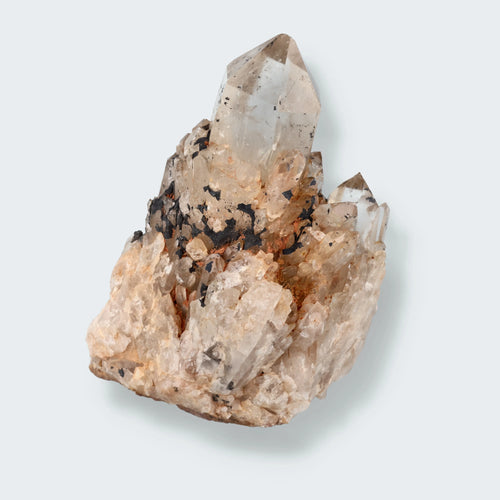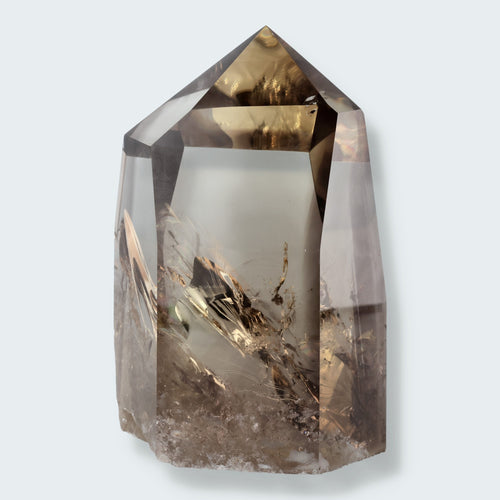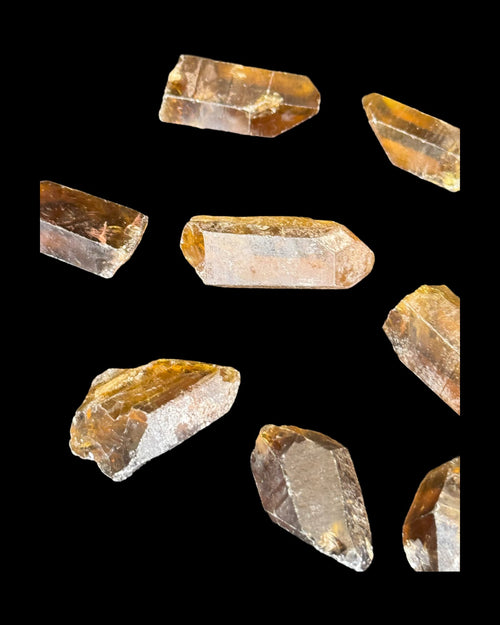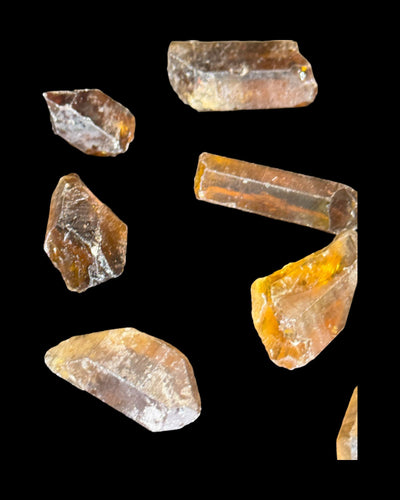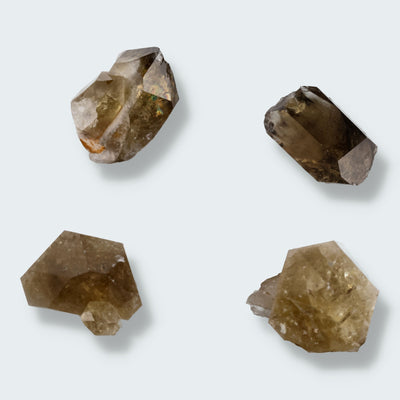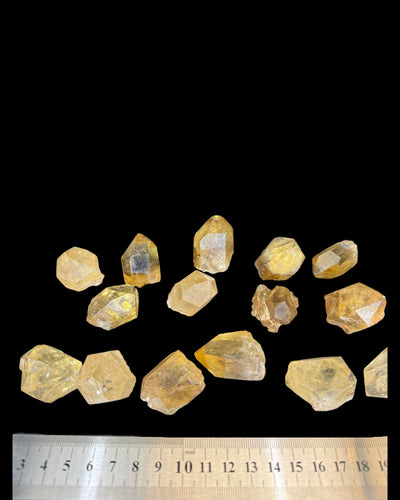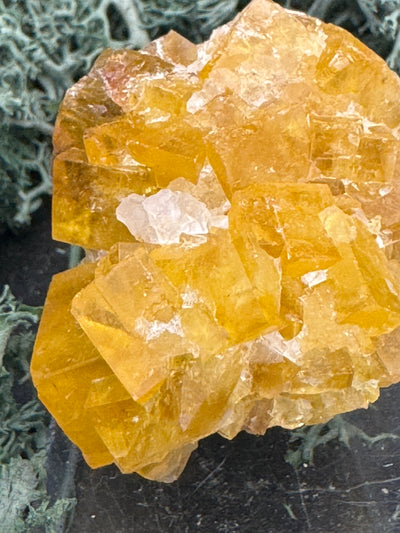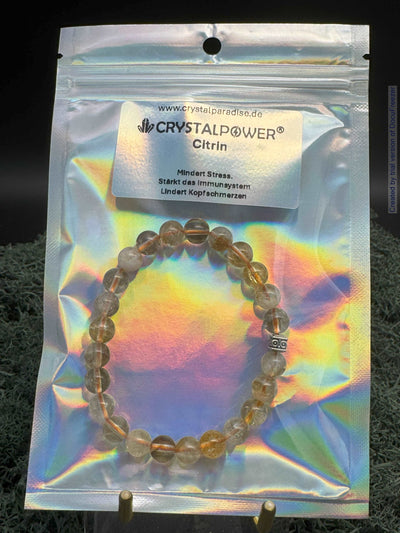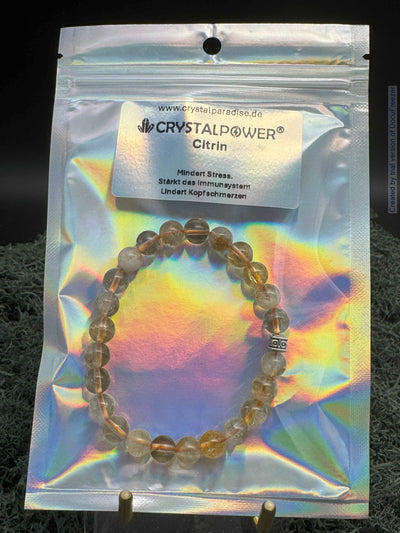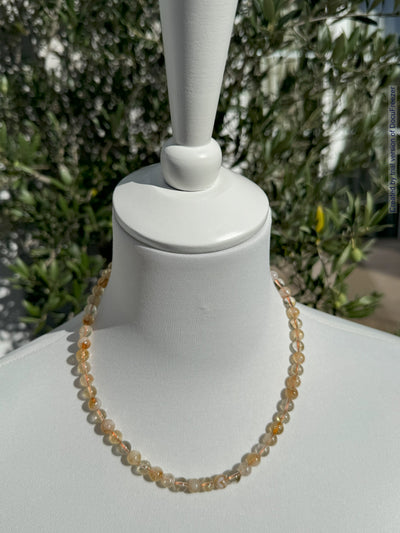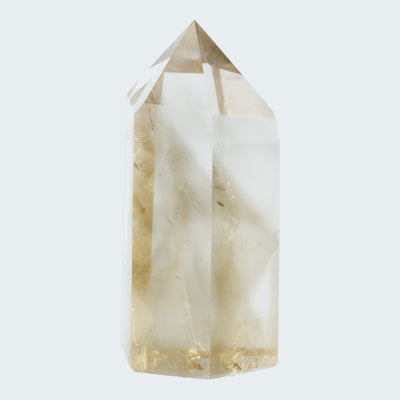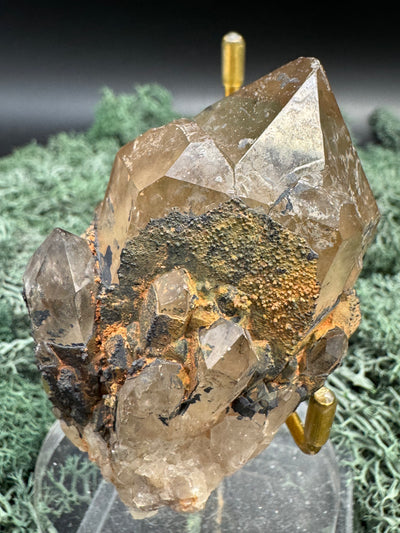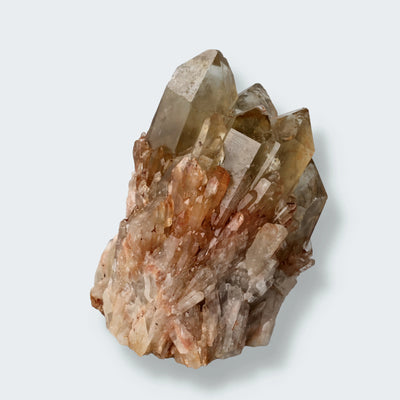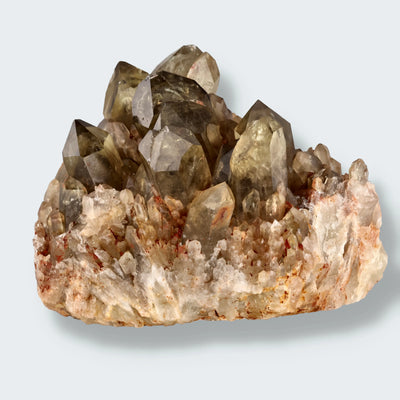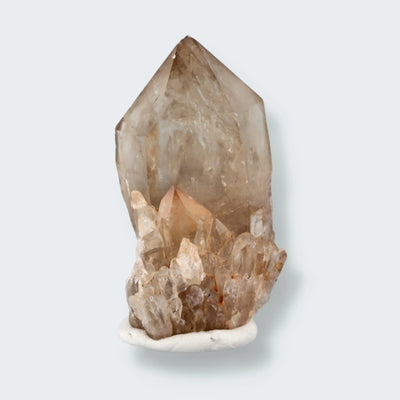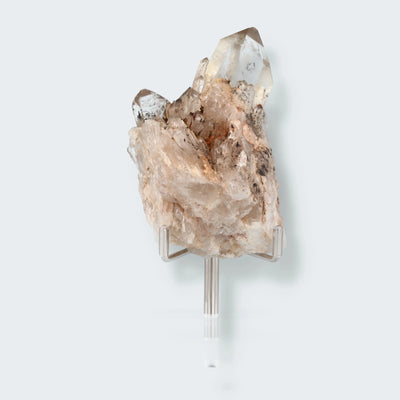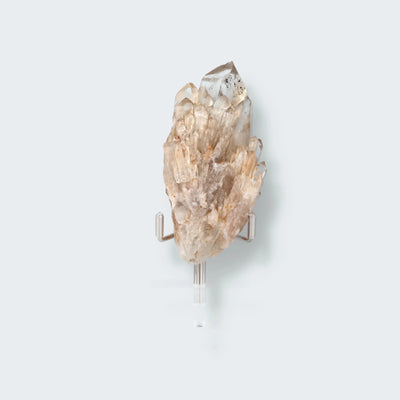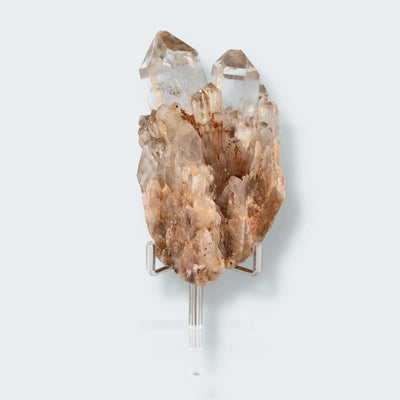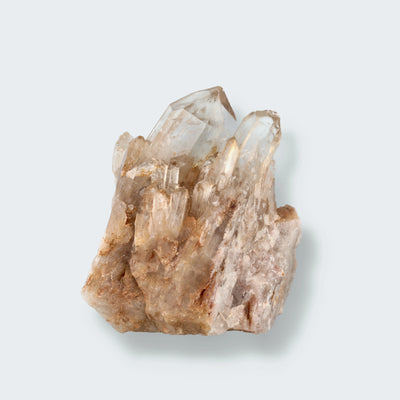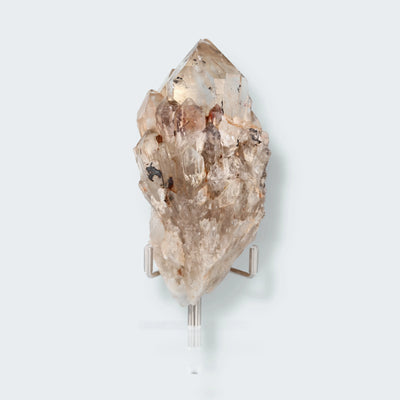Stone Type - Citrine
Filter and sort
Citrine is a radiant gemstone that instantly lifts your spirits with its warm yellow to gold hue. If you're interested in buying citrine , you'll find all the important details here—from its mineralogical structure and cultural significance to its healing and waterstone properties. As an experienced mineral dealer in the greater Munich area , we present carefully selected crystals and gemstones —discover pure energy in every piece!
🧬 Mineralogical details (buying citrine is worth it!)
If you want to buy citrine, you should know its mineralogical properties:
-
Chemical formula : SiO₂, pure silica quartz
-
Chemical composition : predominantly silicon dioxide, traces of iron color it yellow
-
Colour : from light yellow to golden yellow to smoky orange
-
Line color : white
-
Gloss : glass-like (Vitro gloss)
-
Mohs hardness : 7 – quite resistant
-
Cleavage : no clear cleavage
-
Fracture : conchoidal – typical quartz structure
-
Instability : resistant to chemicals, moderately heat sensitive
-
Crystal system : trigonal (hexagonal-rhombohedral)
-
Morphology : often prismatic crystals with pyramids, also as druses, tumbled stones, spheres.
If you want to buy citrine , you will get a robust mineral that is ideal for jewelry and spatial energies.
🔍 Important sites worldwide
-
Brazil : Minas Gerais – leader in quality and quantity
-
Uruguay & Argentina : particularly golden citrine
-
Madagascar : bright yellow
-
Russia : polished crystals & collector quality
-
USA : e.g. B. in California & North Carolina
-
Spain & France : smaller, fine deposits
If you want to buy citrine, you can choose from a variety of global qualities – ideal as crystals , gemstones or personal jewelry.
🏛 Meaning in different cultures
Citrine was already popular in ancient times: The Romans called it the "solar stone" and relied on its radiant power. In the Middle Ages, it was considered a protective stone against negative energies. In Asia, it was used as a lucky charm, bringing prosperity and good harvests. Today, citrine continues to represent optimism, success, and positive energy—a true bundle of energy.
🌿 Healing & Water Stone Application
Buying citrine is worthwhile because it has many uses:
-
General healing effect : promotes self-confidence, optimism and joy of life
-
Energetic effect : releases blockages, strengthens the solar plexus, activating concentration
-
Water stone : ideal for making gemstone water – simply place the stone in water and leave it overnight
-
Application : as a hand flatterer, jewelry or placement in the living/working space
-
Daily ritual : cleanse in the morning, then set your intention – ideal if you want to buy citrine to support clarity and motivation in everyday life
♌ Reference to zodiac signs
Citrine belongs astrologically to Leo and Gemini:
-
Leo (main stone) : strengthens self-confidence, assertiveness and energy
-
Gemini (balancing stone) : brings mental clarity, strengthens communication skills
-
Cancer and Capricorn also benefit – citrine brings balance and inner stability.
If you want to buy citrine, you will find it ideally suited to your zodiac energy.
💎 Why buy citrine?
-
Uniqueness : each crystal is individual – natural color nuances, patterns
-
Decorative & energetic : as a tumbled stone, geode or jewelry, an eye-catcher and source of power
-
All-rounder for life energy : promotes health, motivation and well-being
-
Interesting for collectors : Citrine together with other stones, perfectly complemented by our category “ Minerals for collectors – Stone types ”
-
Part of our Crystal Power series : complement your collection with matching stones under " crystal power – healing stones by type "
FAQ – Frequently asked questions about buying citrine
Q: How do I recognize real citrine?
A: Genuine citrines exhibit a natural yellow to gold color without streaks or unnatural lumps. Good citrines from Brazil or Madagascar are transparent and vibrant.
Q: How do I cleanse my citrine?
A: Rinse gently under running water, cleanse energetically with rock crystal or smoky quartz. Brief exposure to sunlight is OK, but prolonged exposure to sunlight may cause the color to fade slightly.
Q: Can I put citrine in water?
A: Yes – suitable as a water stone. Leave it in a glass of water (preferably filtered water) overnight and enjoy the energized water in the morning. Then rinse well.
⚠️ Healing Stone Disclaimer
Please note that the effects of gemstones and minerals have not been scientifically proven and should therefore not be considered a substitute for medical treatments or therapies. These are traditions and beliefs that everyone can interpret and apply for themselves.
Conclusion & Call to Action
If you choose to buy citrine , you'll receive a powerful crystal full of light, energy, and optimism. Our high-quality, selected citrine stones—as rough stones, tumbled stones, or jewelry—are ideal companions and eye-catchers. Get your citrine now and add radiance and life to your collection!
#Citrine #Gemstones #Crystals #Minerals #HealingStones #WaterStone #MineralDealerMunich #BuyCitrine #CrystalPower #Collectible


